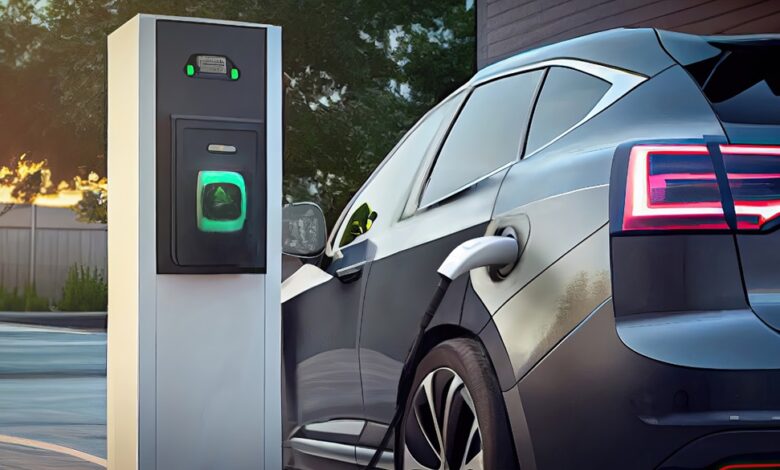How EV is expected to Affect the oil market in the coming years

Electric vehicle development is progressing so fast that, within a very short period, its effect will be seen both in the automobile and energy industries. The move to EVs from internal combustion engines (ICE) quickens with the improvement in technology and growing concerns about the environment. This transition is most likely to have deep implications for the oil market, from demand to prices and crude oil investing strategies.
Falling Oil Demand
The coming of age of electric vehicles is going to drastically alter the oil market by depressing its demand. More and more people and businesses will abandon their reliance on gasoline and diesel engines to head towards electric vehicles, thus reducing demand for oil-based fuels. This shift is driven by EV technology innovations, increased environmental awareness, and supportive government policy. This expected fall in oil consumption will have serious implications for oil producers and investors, not to mention global markets, with respect to the rebalancing of the global energy scenario in the future. Crude oil investing will need to adapt to these changes to remain viable.
Consumption Impact
EVs are much more likely to be the cause of a significant reduction in worldwide oil demand since they have started wide acceptance. Traditional petrol/diesel cars comprise an immense share of oil consumption. If more and more people move to EVs, fuel demand will decrease. This is already visible in countries like Norway and China with high penetration of EVs. The International Energy Agency estimates that there could be as many as 145 million EVs on the road by 2030, radically curtailing oil demand.
Investment Shifts
The prospect of declining demand is forcing investors to review their portfolios. For decades, the oil sector was seen as a sure thing in terms of steady profits; this is now being called into question. More and more, investors are taking a long view with regard to crude oil investments. This has forced many to diversify into renewable energies and technologies supporting the EV ecosystem, from the manufacturing of batteries needed to run these to associated charging infrastructure. The very term “crude oil investing” means different things to most stakeholders today, as they balance the potential for future returns against the backdrop of a changing energy landscape.
Price Fluctuations
Market Volatility
The oil market is naturally volatile, and its prices are affected by countless factors, from geopolitical tensions to disruptions in supply or increases in demand dependent on economic conditions. Adding EVs to the mix makes things get even more complicated. When demand for oil goes down as it did after various events, prices will see more frequent fluctuations. Short-term supply gluts may lead to price drops, while an unexpected event that constrains supply could cause a spike.
Long-term Price Trends
Long-term EV adoption will shift the demand curve, putting downward pressure on the price of oil. This does not work in a linear way, however. Some factors that will interact to influence prices include OPEC production decisions, technological levels of new oil extraction, the pace of EV adoption, and others. Analysts say that as prices may stabilize at a lower level, there will be periods of adjustment as the market adjusts to new consumption patterns.
Changes in Oil Production
Adjust Production Levels
All of the above will goad oil-producing countries and companies to alter the current course of market dynamics. This could include scaling back production to prevent oversupply and to keep prices stable. For instance, OPEC and its allies have a history of adjusting production levels to influence prices, which is likely to continue into the future. Their effectiveness at adjusting these levels, however, might erode with rising EV influence.
Operational Efficiency
Oil producers may also focus their attention on operational efficiency as demand starts to decline. If the production costs can be kept low and extraction methods optimum, then they can remain profitable even at lowered prices. Companies may adopt new technologies, therefore, enabling effective resource management, which includes advanced well drilling techniques and innovations linked with the digital oil field.
Environmental and Regulatory Factors
Emission Regulations
Across the world, governments are putting in place more stringent emission norms to help fight climate change. These policies facilitate EV adoption and penalize high-emission vehicles; hence, they are having a net effect of depressing oil demand. For example, the European Union’s Green Deal sets a goal for reaching net zero emissions by 2050, with deep electrification in transport.
Renewable Energy Integration
With the world becoming increasingly focused on greener sources of energy, so is the integration of renewable energy into grids. Not only will this change sustain EVs, which are already being marketed and sold on their environmentally friendly features coupled with renewable power, but it will also drastically reduce the demand for oil, especially within the transportation sector, as renewables grow.
Investment in EV Infrastructure
Charging Networks
Much of the growth of the EV industry depends on the charging infrastructure. Governments and private companies invest billions in the expansion of charging networks to meet the growing demand. The infrastructure boom brings opportunities for investors and businesses that can support the buildout of those networks. With the number of charging stations increasing, the convenience of owning an EV also increases and further reduces oil dependency.
Battery Technology
Most of the future of EVs will depend on how much better battery technology can develop. Better batteries offer higher efficiency, longer ranges, and quicker times to charge, making the cars more consumer friendly. Businesses that invest in research and development related to batteries stand to profit from a growing EV market. Additionally to this, the new turns toward green production and recycling set the stage for reducing, the overall, carbon footprint on the planet.
Socioeconomic Impacts
Job Market Shifts
Huge impacts on socioeconomic levels will also take place with the shift from oil to EVs. On one hand, certain jobs in the oil sector related to extraction and refining are likely to shrink with falling demand. On the other hand, there will be a whole new set of opportunities opened by the EV sector in manufacturing, producing batteries, and laying infrastructure. Programs for retraining the workforce will therefore be essential in this process for workers.
Economic Diversification
Such a move can only be possible if countries reliant on oil exports reduce their dependence on the product by developing alternative sources of earnings. This could be through investment in renewable energy, technology, and other such industries. A diversified economy will lead to economic stability that can help these economies not be affected by every change in the global oil market.
Technological Advancements and Their Impact
Autonomous Vehicles
Another influential factor in the oil market could be the development of autonomous vehicles. Most AVs are foreseen to be electric, thus decreasing oil demand even more. Additionally, AVs could raise vehicle usage efficiency due to their potential to decrease the number of vehicles driven on the road, which would lower fuel consumption.
Smart Grids and Energy Storage
Advanced energy storage and smart grids can provide broad diffusion for EVs. Smart grids will efficiently manage the distribution of energy, and energy storage systems will store the excess renewable energy generated for later use. This technology is useful for balancing the supply and demand curves so that a stable energy supply may be provided to the EVs, hence reducing the need for oil-based generation.
How Policy and Regulation Will Drive the Transition
Government Incentives
Government incentives are extremely instrumental in stepping up the adoption of EVs. Subsidies, tax breaks, and rebates offered to EV buyers bring down their prices. Similarly, investments in EV infrastructure and funding toward research can greatly facilitate innovation and development. Policymakers need to stay on course in promoting EVs to ensure that oil demand is kept at reduced levels on a sustainable basis.
International Agreements
International agreements on climate change, such as the Paris Agreement, have provided goals for GHG mitigation. Actually, these agreements accelerate country policies on the diffusion of EVs and renewable energy thereby reducing oil demand. Continued international cooperation is needed to achieve global climate objectives and to reduce dependence on fossil fuels.
Consumer Behavior and Market Dynamics
Changing Preferences
It is projected that consumers will prefer more sustainable and environmentally friendly products. A greater number of consumers will opt for EVs rather than traditional ones with rising awareness regarding climate change. This will thus hasten the drop in oil demand and provide impetus to the EV market growth.
Market Competition
The market for automobiles is becoming ever more competitive, with traditional automakers and new entrants pitching for a share in the EV market. Competition from companies such as Tesla, Rivian, and Lucid Motors keeps the legacy brands challenged and continuously drives innovations to stay ahead in the technology race regarding EVs. This will result in better products, lower prices, and more extensive adoption of EVs, further shaking the oil market.
Challenges and Opportunities
Infrastructure Challenges
While the growth of EVs opens many opportunities for growth and investment, a host of challenges could very well slow that development. An extended charging infrastructure is needed for EVs to become a mainstream means of transport. That in turn requires huge investment and coordination between governments, businesses and utility companies.
Innovation Opportunities
The move to EVs opens numerous opportunities for innovation in improving batteries, charging solutions, and renewable energy grid integration. Companies that can master these challenges and turn these opportunities into real success will have a foothold in the changing energy landscape.
In summary, the increase in electric vehicles forebodes many changes to the oil market over the next couple of years. From depressed demand and price volatility to shifts in production strategy and an altered regulatory environment, the impact will be broad. Investors, corporations, and governments have to face this new environment, adjust to the new technologies, invest in renewable energy, and embrace economic diversification. By staying ahead of these trends, stakeholders can navigate the challenges and seize the opportunities that come their way in the shift toward a more sustainable energy future.




